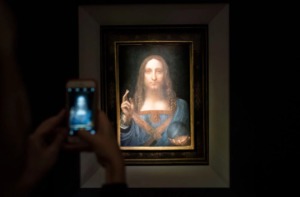
An attempt to psychoanalyze the buyer of Leonardo da Vinci’s ‘Salvator Mundi.’
Every May and November, many around the art world wonder aloud—with varying degrees of frustration—why so much of the media fixates its auction coverage on star lots and gaudy prices. The 36-hour frenzy following Christie’s sale of Salvator Mundi (circa 1500), the so-called “Last da Vinci,” answered those questions with the blunt force of a bowling ball dropped onto a parked car from a penthouse window.
By now, everyone reading this piece knows that the painting sold for a hallucinatory amount of money: $450.3 million with the auction house premium, crushing the painting’s guarantee of nearly $100 million by a 4.5X multiple. And ever since, nearly everyone with even a tangential interest in art has felt compelled to grapple with the unexpected result in some way, even if only by vocalizing how much more attention or money we as a species could be dedicating to other, more important issues.
I’m sympathetic to that viewpoint. However, regardless of whether you’d committed yourself to avoiding the art market entirely or felt you’d made complete peace with big money’s impact on culture, seeing Salvator Mundi’s price tag is still like taking your dog out for its regular morning walk only for it to be snatched off the street by a pterodactyl. The outcome is so far out of bounds that it bends our understanding of reality’s basic parameters.
